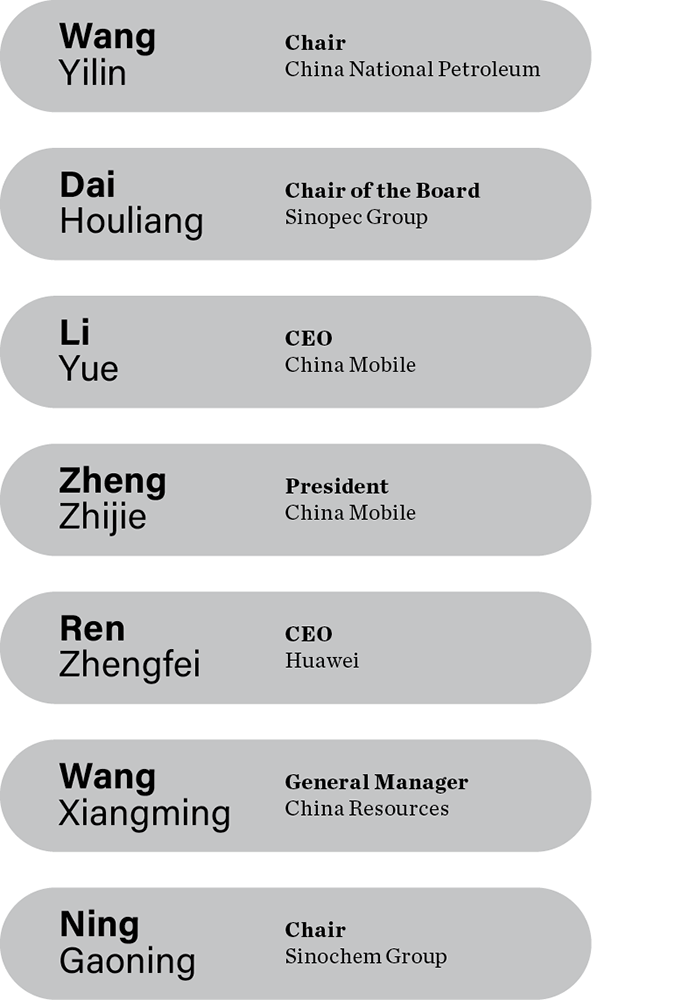
Culture clashes between global headquarters and China branches
The 2019 documentary American Factory—which looks at a Chinese industrial leader setting up operations in a closed General Motors factory in Middle America—shows how, despite the best intentions on both sides, culture clashes may dramatically hinder the operation of a multinational company. European Chamber members have also frequently reported misunderstandings between them and their bases in Europe. Gabor Holch of Campanile Management Consulting guides us through some situations that may cause friction between a company’s overseas headquarters and its branches in China.
Multinational companies succeed in China if they can ‘translate’ global strategy into local performance – something easier said than done. ‘Organisations’ are called that because they resemble living organisms in complexity and unpredictability, even under normal circumstances. And when they go global, new risks appear and the most trusted people can become sources of friction. Have you seen an international project team under pressure? Have you heard a Chinese general manager report to a European board? Then you know what I mean.
When reporting lines cross continents, everybody is out of their comfort zone. That makes people nervous, and stress undermines productivity. As an instinctive response, people avoid cultural strangeness. Western executives confine themselves to urban expat bubbles. Chinese ones rely on a vast home market to get promotions with minimum international exposure: for some, their first foreign trip is to an Asia-Pacific management position. Local or expat, executives march towards the same awkward dilemma when they start directly reporting to headquarters: either sounding ‘too foreign’ to Chinese clients, suppliers and colleagues, or sounding ‘too Chinese’ to bosses at home. Sometimes both. Why does culture challenge smart people who are paid to overcome challenges?
Tragic and comic mishaps both come from the same mistaken understanding of cultural adaptation. For decades, military, government and business leaders were taught to figure out the rules of a specific culture and then follow them. ‘When in Rome…’ But as globalisation spread, reality revealed the absurdity of ‘learning a culture’ before doing business there. A culture is not a set of rules to learn: recent research by Mai Nguyen and others[1] suggests that we partially carry it in our DNA. But even if you could ‘learn a culture’ like you learn the rules of badminton, it would be useless. A strange environment does not trigger the desire to learn, but rather ancient instincts of self-preservation. Psychologically speaking, intercultural challenge is not like learning badminton: it is like being caught in a Champions League rugby game without the necessary skills.

Allow me to outline three case studies, each describing a typical HQ–China hurdle. The practical lessons we can draw from them can help multinationals with ambitions in a China that is becoming an increasingly cautious partner and adamant competitor to foreign firms. But Chinese managers need to learn too. While first- and second-generation Asian leaders redefine global business (Microsoft’s Satya Nadella, Google’s Sundar Pichai, Adobe’s Shantanu Narayen), politics (Ban Ki-Moon, United Nations) and academia (Francis Fukuyama, Rand Corporation), China has yet to produce comparable household names. In CEO World’s 2019 list of 121 most influential CEOs, all the Chinese executives named represented local, and mostly state-owned, firms.[2]
A relatively straightforward first case is a European technology firm whose Chinese research and development (R&D) unit demanded last-minute changes that often stretched quality standards. They also suggested beating deadlines by weekend overtime: a cultural and legal impossibility at HQ. The weakness of a traditional cross-cultural approach is instantly apparent: which side should ‘learn the rules’ of the other and comply?
Predictably, the Chinese saw a complacent Old Continent lacking commercial acumen, while Europeans condescended to China as a poor country that struggles towards their own heights of wellbeing. In such cases, what hinders cooperation is not understanding, but emotions over the other side’s seemingly unpredictable, incomprehensible and often intimidating behaviour. Pointing at a poster of core values is pointless: words like ‘commitment’ and ‘passion’ mean different things in each culture.
To resolve such situations, multinational executives must approach culture pro-actively. Instead of trying to adapt to any existing culture, they must define expectations for the team, unit or firm, and take all consequences. Is weekend work a sign of commitment or poverty? Is night-time texting diligent or foolish? Is refusal complacent or rightful? These are the wrong questions. Decision-makers must clarify the desirable practices within the organisation, then apply sticks-and-carrots fairly and consistently for everyone. Options are many. They can define the culture in a top-down or bottom-up manner. They can give different locations uniform or custom-made rules. But requirements must be communicated and implemented, like the ones we follow in traffic or at weddings. Consistency will result in a shared cultural comfort zone where people with diverse backgrounds can keep stress down, motivation up and be their best selves.
A more complex case involves a German China CEO who offered his prospective client a discount so steep that the HQ’s enterprise resource planning system rejected it: the board reckoned “he became too Chinese”. That implies various problems within the organisation, including a lack of agreed guidelines, and competition between home and overseas entities. But ultimately, the case is personal: the CEO described how he admired China’s pragmatic and flexible business environment. Decision-makers could have predicted this by comparing his personality profile with a cultural reference system like The Culture Map,[3] which reveals matches and mismatches between individual temperament, home cultures and expat destinations. Ignorance about a manager’s personality brings cultural risk. But if jobs are assigned through alignment among personal profiles, corporate and native cultures, acting naturally suddenly becomes a strength. The German CEO excelled at local negotiations, but needed his management team’s thorough and compliant members to prepare alternative offers and ‘sell’ local decisions to German headquarters.
Our third case reveals a frequent irony of intercultural management: that sometimes cultural knowledge becomes the problem. One global firm decided to remove its traditional ‘glass ceiling’ and promote Chinese executives to global roles. The results were confusing. Headquarters expected docile and obedient, Confucian-style candidates, and the newcomers’ tough personal, strategic and financial approaches utterly shocked them. The newly promoted Chinese managers wondered why the century-old firm resisted progress and Asia’s growing influence. Naturally, both sides were mistaken. Confucian harmony is as relevant in China’s modern metropolises as Plato is in EU trade law—even decade-old business culture manuals on China are outdated today. Chinese managers can become equally misguided after prolonged work alongside voluntary expats with enthusiasm towards the country, its people and peculiarities. To work together, business leaders must forget how people ‘should be’ based on their passport, and focus on actual characteristics. Depending on their personality and history, one Chinese manager can behave quintessentially Confucian while another acts like a Wall Street shark, both claiming to represent Chinese culture. Smart leaders delegate, motivate and promote according to each profile and the job at hand.
The Chinese do not always act like Chinese and Europeans often fail to play their dutiful cultural roles. Mapping individual strengths and weaknesses, defining clear-cut corporate cultures and matching personal temperaments with specific tasks serves dual purposes. First, it keeps managers from using cultural challenges as an excuse for poor performance. Second, it keeps the focus on each person’s contribution to company goals. Some expat managers thrive in China for their cultural adaptability, some for their indispensable technical skills. Some Chinese leaders can be expected to fit in at headquarters, some arrive there to sound a wake-up call. Cultural aptitude is a tool, not a goal. A leader’s job is not to understand and follow any culture, but to create one that supports results across continents.
Campanile
Gabor Holch is an intercultural leadership consultant,
coach and speaker working with executives at Asian and European branches of
major multinationals. His Shanghai-based team, Campanile Management
Consulting, has served 100+ clients in 30+ countries since 2005. An expat
since age 4, China-based for 17 years and working globally, Gabor is a Certified
Management Consultant (CMC) in English and Mandarin, certified consultant at the
management academies of half a dozen global corporations and licensed in major
assessment tools including DISC, the Predictive Index and MBTI.
[1] Nguyen-Phuong-Mai, M., Cross-Cultural Management (Routledge International Business Studies), Routledge, 2019.
[2] Best CEOs in the World 2019: Most Influential Chief Executives, CEOWorld, 25th July 2019, viewed 6th November 2019, <https://ceoworld.biz/2019/07/25/best-ceos-in-the-world-2019/>
[3] Culture Map Decoding How People Think, Lead, and Get Things Done Across Cultures by Erin Meyer, 2016, Public Affairs, New York.


Good analysis.
To me, the cultural gap is everywhere. I am Indian, it is a gap when you visit another province, a gap of language, food is there. Even in your home town, there is a gap in lifestyle.
To me, it is a mindset. Especially those who are so-called educated and do not understand what is modernity really is should learn to have an open mind.
global citizens supposed to fill the gap and increase solidarity.